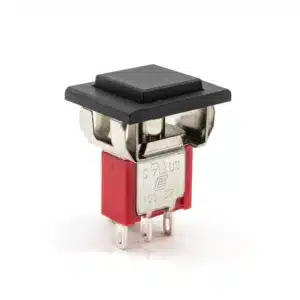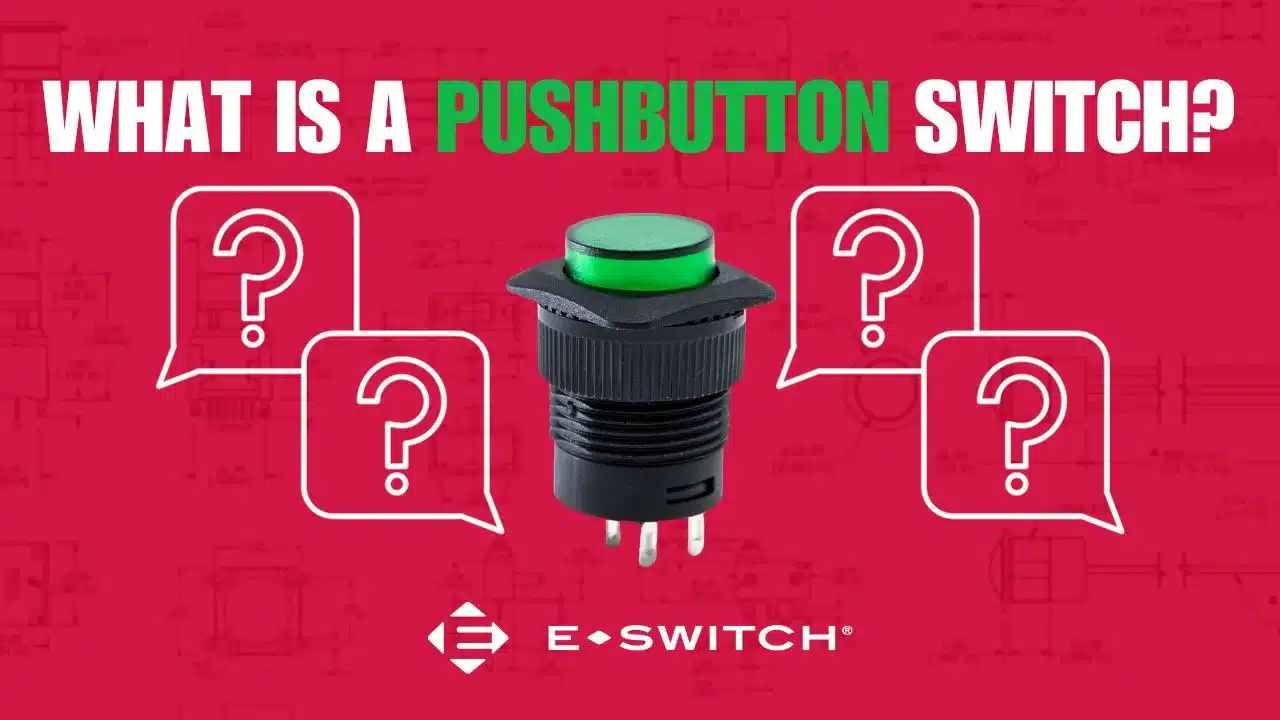What Are Pushbutton Switches?
It’s a type of electrical switch that’s used to control an electrical circuit by physically pressing a button. A Pushbutton switch, also known as a push switch, is a type of mechanical switch used to control the flow of electric current in an electronic circuit.
It is typically used for momentary, on-demand operations, where the switch is pressed to make or break the electrical connection, and it returns to its original position when released.
How Do They Function?

When you press the button, it makes or breaks an electrical connection, allowing or interrupting the flow of electricity through the circuit. Pushbutton switches are commonly used in various electronic devices, control panels and applications where a user needs to activate or deactivate a function or operation.
Pushbutton switches come in various shapes and sizes, but they typically consist of a housing or enclosure and a button or actuator that is designed to be pressed. The actuator can be made of various materials, such as plastic or metal, and it’s connected to the switch mechanism inside the housing.
They can be either momentary or latching.
Momentary: In a momentary Pushbutton switch, the circuit is only connected (or disconnected) while the button is being actively pressed. As soon as you release the button, the connection is broken.
Latching: Latching Pushbutton switches have two stable states, and they stay in the position you push them into until you press them again to change the state. This means they can either maintain an open circuit or a closed circuit until manually switched to the other state.
What’s the Difference Between Pushbutton and Tactile Switches?
Tactile switches and Pushbutton switches are both types of mechanical switches used for controlling electrical circuits, but they differ in terms of their design, functionality and tactile feedback.
Tactile switches are designed to provide feedback to the user when the switch actuates. When you press a tactile switch, you can feel a noticeable physical “click” or resistance, which gives you confirmation that the switch has been activated. This tactile feedback is often preferred in applications where precise control is important as it helps prevent accidental presses. Pushbutton switches can vary in terms of tactile feedback. Some push switches may provide a tactile click similar to tactile switches, but not all of them do. There are Pushbutton switches that offer a smoother and quieter actuation without a distinct tactile feel.
Tactile switches are typically momentary, meaning the electrical connection is established only while the switch is actively pressed. When you release the button, the connection is broken. Pushbutton switches can be either momentary or latching. Momentary push switches are similar to tact switches in that they are pressed to make and released to break the electrical connection. Latching Pushbutton switches, on the other hand, can maintain their state (either open or closed) until manually switched to the other state.
Pros & Cons
They are intuitive and easy for users to operate. They also come in various shapes, sizes and designs to suit different applications. They can be customized for specific needs, making them versatile for a wide range of functions.
Quality Pushbutton switches are often designed to withstand a large number of actuations, making them durable and reliable for long-term use.
In many cases, Pushbutton switches can be designed with visual indicators (LEDs) to show the current status of the switch, such as whether a device is on or off.
However, most are designed for simple on/off control. They may not be suitable for applications that require variable control or multiple functions from a single switch. They typically have a single-pole, single-throw (SPST) contact configuration — this means they can only make or break a single electrical connection.
Pushbutton switches are often used for low to moderate current applications. For high-current or high-voltage applications, larger and more robust switches may be required. For applications with limited space, tactile switches have a smaller profile.
What Are They Used For?
- Telecommunications
- Networking
- Computers/servers
- Performance audio
- Instrumentation
- Low power on/off designs
- External hard drives and modems
- Consumer electronics
- Medical devices
E-Switch Pushbutton Offerings
Deciding on the size, style and functionality of the Pushbutton is often determined by the application. E-Switch offers a wide range of Pushbutton switches from miniature size with low current ratings to industrial use switches with high power and horsepower ratings.
Several Pushbutton switches provide an IP rating of IP54, IP65 or IP67 depending on the switch series. The shapes and styles are endless from E-Switch. Shape options include square, round, oval, rectangle and some switches offer caps.
Multiple termination options are available within the Pushbutton family — solder lug, PCB pin, right angle PCB pins, Vertical PCB pins, surface mount, socket and tab.
